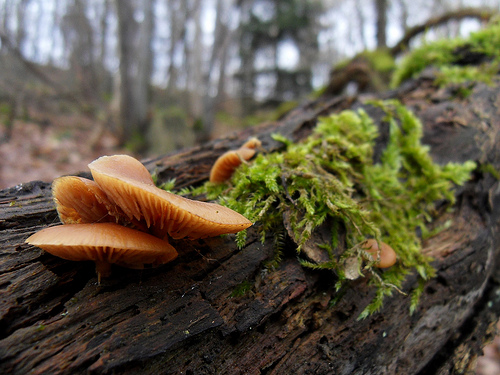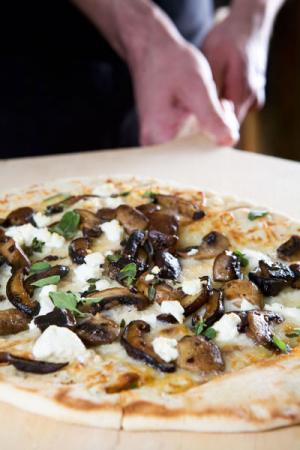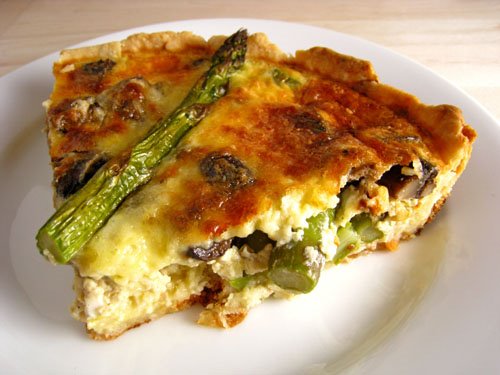Fabulous Fungi

Here’s a riddle for you: What flourishes without light, doesn’t use flowers or seeds to grow and is so diverse it can even be grown in your hall closet?
Its mushrooms of course!
Mushrooms are unique because they are not plants at all – they are fungi. They reproduce with spores not seeds and they don’t contain any chlorophyll or go through photosynthesis like regular plants. That’s why they can grow in cool, damp, dark places instead of warm, sunny ones.
The nutrients mushrooms need to grow come from a growing medium called substrate—usually a rotting log or a “brick” of straw, rice bran or sawdust in bags. A mushroom is really the fruit of the fungus; the actual “plant” if you will, is a network of root-like threads, called the mycelium. Mushrooms reach harvestable size in several weeks and can be picked for about 15 weeks.
To begin growing your own, first decide what type of mushroom you’d like to grow, as each variety likes a certain type of growing medium. It may be a good idea to start with an easy growing variety that can be found in a kit, like the shiitake or oyster, for first-timers. Kits will come complete with the right kind of substrate for the mushroom variety, mushroom spores and growing instructions.
If you decide to grow mushrooms without the aid of a kit you’ll need to do a bit more research. First, find the right kind of growing medium for the variety you want to grow-each mushroom variety has its own preferred growing conditions. While most favor logs, straw or sawdust, some will grow on used coffee grounds and even on corncobs. The medium will then need to be sterilized with heat, tightly compacted in a bag or on a tray and then inoculated with the spawn. A word of caution here: resist the temptation to use free spawn from wild mushrooms; purchase good healthy spawn from a reliable supplier.
Be sure to check out the growing habits of the variety you decide to grow so you know how and where to place your growing container. Some mushrooms grow vertically, as they would on a rotting log, and hanging them would be an ideal solution. Others grow horizontally in little clusters as they would on the floor of a dark, clammy forest. These can be grown in a tray placed in a dark closet.
Once your mini mushroom farm is set up all you have to do is water it, set it in a dark place and keep an eye on the conditions. In about a week you’ll see the beginnings of tiny little mushrooms. Depending on the variety you should have “ready to harvest” mushrooms in another 4 to 8 weeks.
How simple is that?
Before you know it you’ll have your very own ethereal fairy-garden of perky little mushrooms.
To learn more about growing mushrooms, check out www.fungi.com and www.gmushrooms.com. The Mushroom Company at www.mushroomcompany.com is a commercial grower site, but has lots of useful information.
To read more about growing mushrooms, check out “Growing Gourmet & Medicinal Mushrooms”, by Paul Stamets.
If growing mushrooms isn’t your thing, you can still enjoy them with these simple recipes.
Mushroom Flatbread
(this can be made with purchased flatbread and ingredients or homemade)

What you’ll need:
Flatbread – 8 each, about 8 to 10-inch diameter
Mushrooms – about 8 medium to large, more if using smaller mushrooms
Red bell peppers, roasted – about 5
Pesto – about 2 cups
Pancetta – ¼ pound, thinly sliced
Directions:
Grill each side of flatbread over medium heat being careful not to burn them.
Toss 8 mushrooms in 3tbsp. of good olive oil and 1tsp. kosher salt. Place on grill on medium heat and cook until mushrooms have achieved a smoky flavor, about 1 to 3 minutes on each side. Remove from grill and break into smaller pieces.
To roast bell peppers, put on grill at the highest temperature and char all sides. Place in a large bowl and cover with plastic wrap for about 20 minutes. This will release the skins from the flesh. Remove skin and seeds and Julienne.
Now you’re ready to assemble: Preheat oven to 350. Lay flatbreads on a work surface and spread pesto on each, stopping just before the edge. Spread mushrooms and bell peppers evenly over flatbreads. Then lay pancetta slices over the top of everything. Place flatbreads in oven directly on the rack for about 5 minutes or until the dough is crisp. Remove and cut into slices.
Mushroom Quiche
(makes 9-inch quiche in a 2-inch fluted tart pan)

1 homemade or pre-made pie crust
1 tbsp. oil
1tbsp. butter
2 shallots, chopped
2 cloves garlic, minced
½ tsp crushed red pepper
1 lb. oyster mushrooms, cleaned and torn into large pieces
½ lb. crimini mushrooms, cleaned, cut in half
½ lb. hen of the woods or white mushrooms, cleaned and torn into large pieces
2 tbsp. Italian parsley, minced
1 tbsp. fresh thyme, chopped
¼ tsp. nutmeg
Salt and pepper, to taste
6 large eggs
1 cup milk
1 cup heavy cream
1 tbsp chives, snipped
1-1/2 cups Gruyere cheese, grated
Place pie crust into buttered tart pan, folding edges and pressing excess inside pan.
Preheat oven to 350. Sauté shallots, garlic and crushed red pepper in oil and butter mixture for about a minute over medium-high heat. Add mushrooms and sauté over high heat until slightly wilted. Add parsley, thyme, nutmeg and salt and pepper to taste. Remove from heat.
Beat eggs, milk and cream together, then add chives and salt and pepper to taste. Place mushroom mixture into dough-lined pan. Pour egg mixture over top and sprinkle with cheese. Bake for 45 minutes covered in foil. Remove foil and continue baking for about 15 minutes. Custard should be thick yet soft. Remove quiche from oven and let cool, residual heat will continue to cook it. Slice and serve.
![]() photo credit: Benoît, simple escargot
photo credit: Benoît, simple escargot
![]() photo credit: Nuggetmarket.com
photo credit: Nuggetmarket.com
![]() photo credit: 2.bp.blogspot.com
photo credit: 2.bp.blogspot.com
Recent comments
Aenean nonummy hendrerit mauris. Phasellus porta.